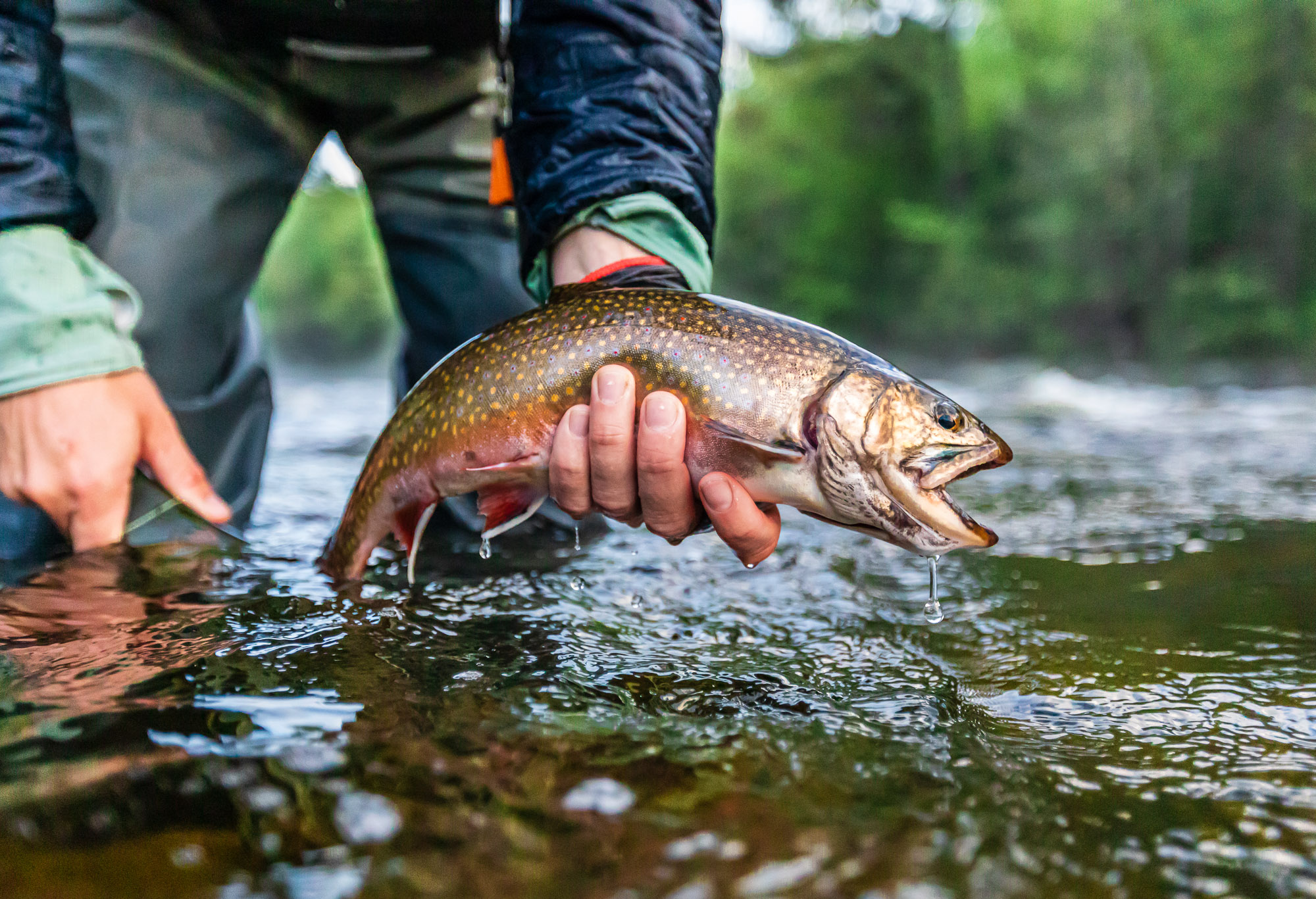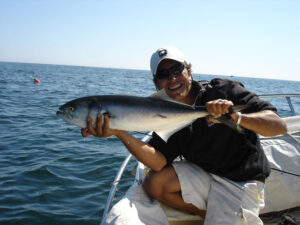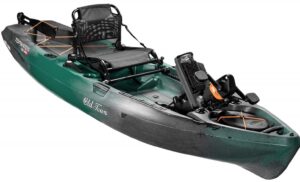Trout fishing is a popular recreational activity enjoyed by millions of people around the world. The thrill of hooking a beautiful trout and the challenge of reeling it in make for an exhilarating experience. If you’re an avid angler or someone looking to try trout fishing for the first time, you may be wondering, “Where can I find trout fishing near me?” In this comprehensive guide, we’ll explore the best trout fishing spots across various regions, share tips on how to catch trout, and provide valuable insights to help you have a successful and enjoyable fishing trip.
The Majesty of Trout Fishing
Before we dive into the specifics of finding trout fishing locations, let’s take a moment to appreciate the majesty of trout fishing. Trout are known for their vibrant colors, agility, and elusive nature, making them a prized catch for anglers. Whether you’re fishing for rainbow trout, brown trout, or brook trout, each species offers a unique challenge and rewards those who are patient, skilled, and knowledgeable.
Trout fishing is not just about the catch; it’s also about the experience. Picture yourself standing knee-deep in a crystal-clear stream, surrounded by breathtaking natural beauty. The sound of rushing water and the gentle rustle of leaves create a serene atmosphere that washes away the stresses of everyday life. As you cast your line and feel the anticipation build, you become one with nature, fully present in the moment. Whether you’re fishing alone or with friends and family, trout fishing provides an opportunity to connect with both yourself and the great outdoors.
Finding Trout Fishing Near Me
Now that we’ve established the allure of trout fishing, let’s explore how to find the best trout fishing spots near you. The availability of trout fishing locations varies depending on your geographical location, so we’ll provide insights for different regions.
Trout Fishing in the Western United States
If you’re located in the western United States, you’re in luck, as this region is renowned for its abundant trout fishing opportunities. Here are some popular spots:
- Yellowstone National Park, Wyoming: Home to some of the most famous trout fishing rivers, such as the Yellowstone River and the Lamar River, this national park offers breathtaking scenery and ample fishing opportunities.
- Colorado River, Colorado: Known for its trophy-sized trout, the Colorado River is a haven for anglers seeking a challenge.
- Deschutes River, Oregon: This scenic river is famous for its steelhead and trout populations, offering a variety of fishing experiences.
Trout Fishing in the Eastern United States
The eastern United States also offers fantastic trout fishing locations. Here are some notable spots:
- Great Smoky Mountains National Park, Tennessee and North Carolina: This iconic national park is home to numerous streams and rivers teeming with trout, including the famed Little Pigeon River.
- Catskill Mountains, New York: Known as the birthplace of American fly fishing, the Catskill Mountains are a must-visit destination for trout fishing enthusiasts.
- Shenandoah National Park, Virginia: With over 70 mountain streams, this park offers plenty of opportunities to catch brook, brown, and rainbow trout.
Trout Fishing in Europe
Europe boasts stunning landscapes and diverse trout fishing locations. Here are a few noteworthy spots:
- River Test, England: Considered the birthplace of modern fly fishing, the River Test is famous for its brown trout and offers a tranquil fishing experience.
- Irish Loughs, Ireland: Ireland is renowned for its wild brown trout, and its picturesque loughs (lakes) provide a serene setting for fishing.
- River Mörrum, Sweden: This river is known for its large salmon and sea trout, attracting anglers from around the world.
Trout Fishing in Australia
Australia is home to diverse trout fishing opportunities, particularly in its southern regions. Here are some popular locations:
- Lake Eucumbene, New South Wales: This large reservoir is stocked with trout and offers a variety of fishing methods, including fly fishing and bait fishing.
- Lake Jindabyne, New South Wales: Surrounded by stunning alpine scenery, this lake is known for its trophy trout and attracts anglers from all over.
- Derwent River, Tasmania: This river is famous for its brown trout, and its picturesque surroundings make it an ideal spot for trout fishing.
Tips for Successful Trout Fishing
Now that you know where to find trout fishing near you, let’s delve into some tips to help you maximize your chances of success:
1. Understand Trout Behavior
Trout are known for their selective feeding habits and can be quite elusive. Educate yourself about the specific trout species you’re targeting and learn about their feeding patterns, preferred habitats, and behavior. This knowledge will give you an edge when it comes to selecting the right bait or lure and finding the best fishing spots.
2. Use the Right Equipment
Investing in quality fishing gear is essential for a successful trout fishing trip. Use a lightweight fishing rod and reel combo specifically designed for trout fishing. Opt for a fishing line with a low visibility color and a light test weight to avoid spooking the fish. Additionally, make sure to pack a variety of hooks, lures, and bait suitable for trout fishing.
3. Master the Art of Casting
Casting is a fundamental skill in trout fishing. Practice different casting techniques, such as overhead casting and roll casting, to improve your accuracy and distance. Remember to be patient and avoid making sudden movements that may startle nearby trout.
4. Experiment with Different Baits and Lures
Trout can be finicky eaters, so it’s important to experiment with various baits and lures to find what works best. Live bait such as worms and minnows are popular choices, as are artificial lures like spinners, spoons, and flies. Pay attention to the conditions and adjust your bait selection accordingly.
5. Practice Catch and Release
Trout are a valuable resource, and practicing catch and release helps preserve their populations for future generations. Handle fish with care, wetting your hands before touching them to minimize damage to their protective slime coating. Use barbless hooks to make the release process easier and quicker.
Conclusion
Trout fishing near you can be an exhilarating and rewarding experience. Whether you’re exploring the pristine rivers of Yellowstone National Park in the United States or casting your line in the picturesque loughs of Ireland, trout fishing offers a unique blend of excitement, tranquility, and connection with nature. By understanding trout behavior, using the right equipment, mastering casting techniques, experimenting with baits and lures, and practicing catch and release, you’ll increase your chances of having a successful trout fishing trip. So grab your gear, find the nearest trout fishing spot, and embark on a memorable adventure filled with laughter, excitement, and the thrill of reeling in these magnificent fish.
FAQs (Frequently Asked Questions)
1. Do I need a fishing license for trout fishing?
Yes, in most places, a fishing license is required for trout fishing. Make sure to check the local regulations and obtain the necessary permits before you go fishing.
2. What is the best time of year for trout fishing?
The best time for trout fishing can vary depending on the location and trout species. Generally, spring and fall are considered prime seasons for trout fishing, as the water temperatures are ideal and the fish are more active.
3. What are some popular trout fishing techniques?
Popular trout fishing techniques include fly fishing, spin fishing, and bait fishing. Each technique has its own advantages and requires different skills and equipment.
4. What is the bag limit for trout fishing?
The bag limit for trout fishing refers to the maximum number of fish an angler is allowed to keep in a single day. Bag limits vary depending on the location and local regulations. It’s important to familiarize yourself with the bag limits to ensure sustainable fishing practices.
5. Are there any safety precautions I should take while trout fishing?
While trout fishing is generally safe, it’s important to take certain precautions. Always wear a properly fitted life jacket when fishing from a boat. Be cautious of slippery rocks and uneven terrain when wading in streams or rivers. Additionally, make sure to bring sunscreen, insect repellent, and enough water to stay hydrated throughout your fishing trip.
Summary
Trout fishing near you offers a thrilling and invigorating experience for anglers of all skill levels. Whetheryou’re exploring the scenic rivers of the western United States, the tranquil loughs of Ireland, or the picturesque lakes of Australia, trout fishing provides a unique opportunity to connect with nature and test your angling skills. By knowing where to find trout fishing spots near you, understanding trout behavior, using the right equipment, mastering casting techniques, experimenting with baits and lures, and practicing catch and release, you can increase your chances of a successful fishing trip.
Trout fishing is a popular sport that requires careful planning and preparation. By researching the best trout fishing spots in your area or in destinations you plan to visit, you can ensure that you have access to prime fishing locations. Whether it’s a nearby river or a remote lake, finding the right spot is crucial for a successful fishing trip.
Understanding trout behavior is another important aspect of trout fishing. Different trout species have unique feeding patterns and habitat preferences. For example, rainbow trout are known to be more aggressive and can be found in faster-moving waters, while brown trout prefer quieter, deeper pools. By researching and learning about the specific trout species in your chosen fishing spot, you can tailor your fishing techniques and increase your chances of catching a trophy fish.
Using the right equipment is essential for trout fishing success. Invest in a lightweight fishing rod and reel combo specifically designed for trout fishing. A sensitive rod will allow you to feel the subtle bites of trout, while a smooth reel will help you reel them in effectively. Choose a fishing line with a low visibility color and a light test weight to avoid spooking the fish. Additionally, pack a variety of hooks, lures, and bait suitable for trout fishing to increase your chances of enticing the fish to bite.
Mastering the art of casting is a skill that can significantly improve your trout fishing success. Practice different casting techniques such as overhead casting, roll casting, and sidearm casting to improve your accuracy and distance. Trout can be easily spooked, so it’s important to make smooth, controlled casts that don’t disturb the water or create unnecessary noise.
Experimenting with different baits and lures is another key aspect of successful trout fishing. Trout can be selective eaters, so it’s important to have a variety of options to entice them. Live bait such as worms or minnows can be effective, as can artificial lures like spinners, spoons, and flies. Pay attention to the conditions, such as water clarity and temperature, and adjust your bait selection accordingly.
Finally, practicing catch and release is essential for the conservation of trout populations. Handle fish with care, wetting your hands before touching them to minimize damage to their protective slime coating. Use barbless hooks to make the release process easier and quicker. By practicing catch and release, you can help ensure that trout populations remain healthy and sustainable for future generations.
FAQs (Frequently Asked Questions)
1. Do I need a fishing license for trout fishing?
Yes, in most places, a fishing license is required for trout fishing. Make sure to check the local regulations and obtain the necessary permits before you go fishing.
2. What is the best time of year for trout fishing?
The best time for trout fishing can vary depending on the location and trout species. Generally, spring and fall are considered prime seasons for trout fishing, as the water temperatures are ideal and the fish are more active.
3. What are some popular trout fishing techniques?
Popular trout fishing techniques include fly fishing, spin fishing, and bait fishing. Each technique has its own advantages and requires different skills and equipment.
4. What is the bag limit for trout fishing?
The bag limit for trout fishing refers to the maximum number of fish an angler is allowed to keep in a single day. Bag limits vary depending on the location and local regulations. It’s important to familiarize yourself with the bag limits to ensure sustainable fishing practices.
5. Are there any safety precautions I should take while trout fishing?
While trout fishing is generally safe, it’s important to take certain precautions. Always wear a properly fitted life jacket when fishing from a boat. Be cautious of slippery rocks and uneven terrain when wading in streams or rivers. Additionally, make sure to bring sunscreen, insect repellent, and enough water to stay hydrated throughout your fishing trip.
Summary
Trout fishing offers a thrilling and invigorating experience for anglers of all skill levels. By knowing where to find trout fishing spots near you, understanding trout behavior, using the right equipment, mastering casting techniques, experimenting with baits and lures, and practicing catch and release, you can increase your chances of a successful fishing trip. Whether you’re casting your line in the pristine rivers of the western United States, exploring the tranquil loughs of Ireland, or fishing in the picturesque lakes of Australia, trout fishing provides a unique opportunity to connect with nature, challenge yourself, and create lasting memories. So grab your fishing gear, find the nearest trout fishing spot, and embark on an adventure filled with laughter, excitement, and the thrill of reeling in these magnificent fish.





